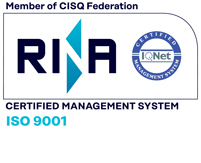Bahrein
BAHRAIN BANK'S EXTERNAL FUNDING TO REMAIN STABLE, SAYS S&P
Funding risk is a prominent topic among investors in GCC banks, particularly during the transition from cheap and abundant liquidity to a more restrictive environment. Major central banks have also made it clear that interest rates will be higher for longer, meaning liquidity will be scarcer and more expensive. This could affect banking systems in emerging markets with significant or growing external debt position such as Bahrain.According to S&P Global Ratings, Bahrain's retail banks (onshore banks) have large and expanding net external liabilities. On 31 March 2023, they reached 26% of total domestic lending. However, S&P Global Ratings notes that 60% of the foreign liabilities are interbank, and 60% are sourced from the GCC. Given the ownership structures of some Bahraini retail banks, the Credit Ratings agency assume that a portion of this external funding is from foreign parents. S&P Global Ratings also assumes that external funding will remain stable under its base-case scenario.Dr. Mohamed Damak, Senior Director and Head of Islamic Finance, S&P Global Ratings said: "Bahraini retail banks' loan to deposit ratios have been consistently below 80% for the past five years. Therefore, in our view, a portion of local deposits and external liabilities are recycled into government and local central bank exposures. On 31 March 2023, these exposures represented almost one-quarter of retail banks' balance sheets.""The other peculiarity of the Bahraini banking system stems from the large wholesale sector. However, we see the risk of disruption to retail banks as relatively limited. Wholesale banks' domestic activity represented about 15% of total assets and remained stable over the past few years," stated Dr Damak. "On March 31, 2023, about half of this exposure comprised interbank transactions-wholesale banks' lending to local retail or wholesale banks--and another one-quarter was direct lending to the Bahraini private sector," he noted. "Exposure to the government represented about 15% of total local assets at the same date. Furthermore, about 78% of these exposures were financed using local sources, meaning that the overall domestic net contribution from wholesale banks to the local economy stood at $4.2 billion, or about 4% of the retail banking system's size, observed Dr Damak.The availability of a well-functioning domestic debt capital market can make a difference for Bahrain’s banking sector's funding opportunities, he noted. In terms of relative stability, funding sourced from the domestic debt capital market tends to be more stable than cross-border funds, but less stable than core customer deposits. Having a broad and deep local debt capital market can therefore help the banking system reduce its dependence on external funding and ease concentration and maturity mismatches, he added. (ICE Doha)
Fonte notizia: Trade Arabia News




